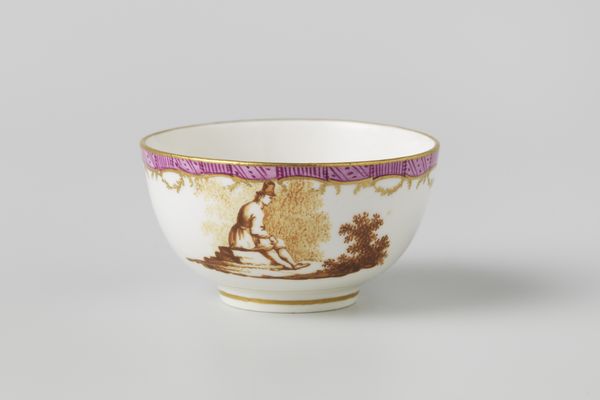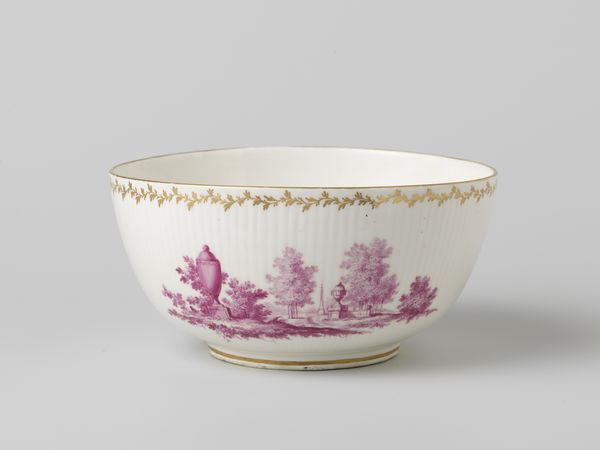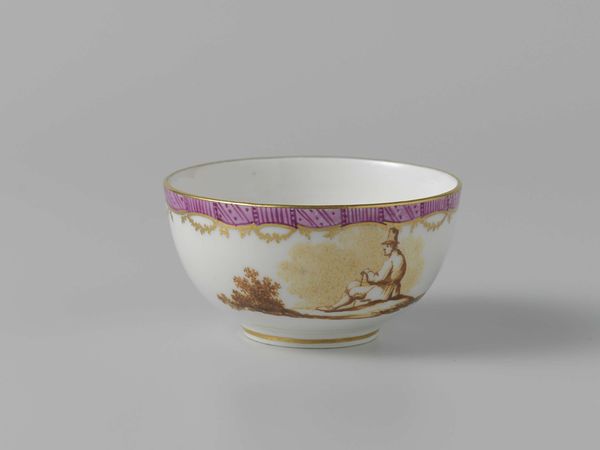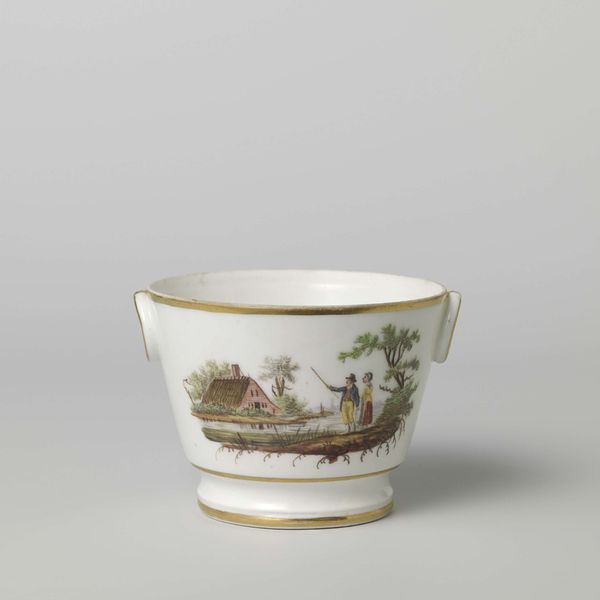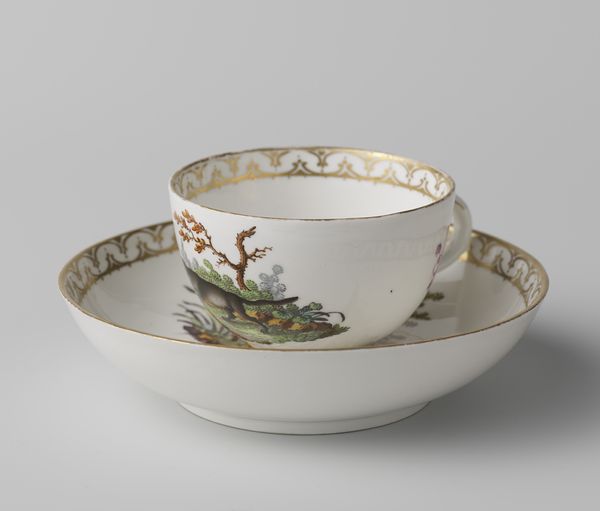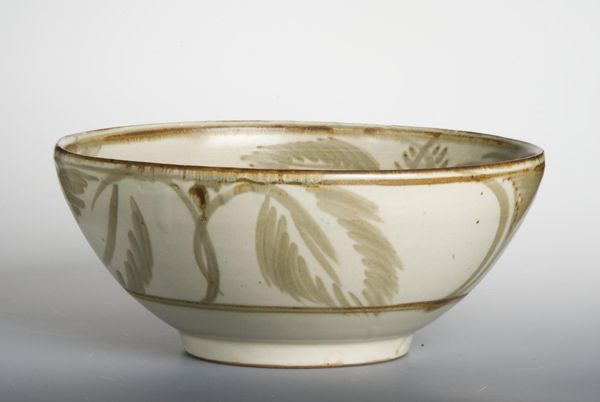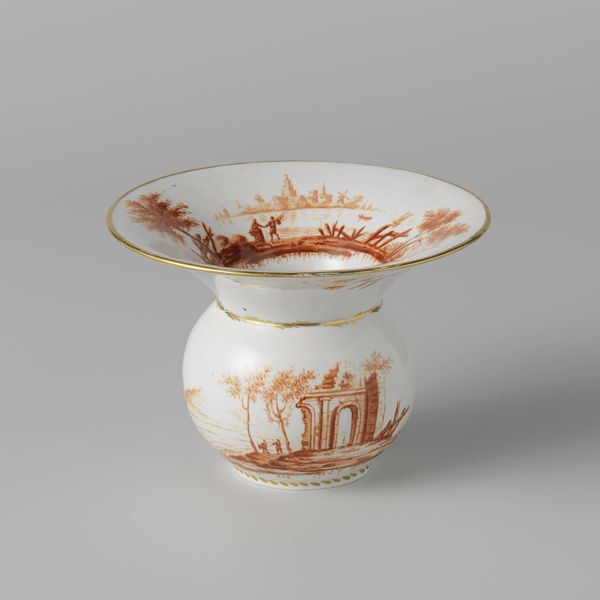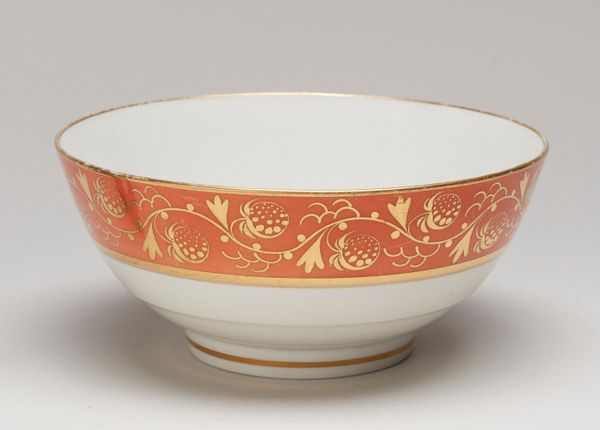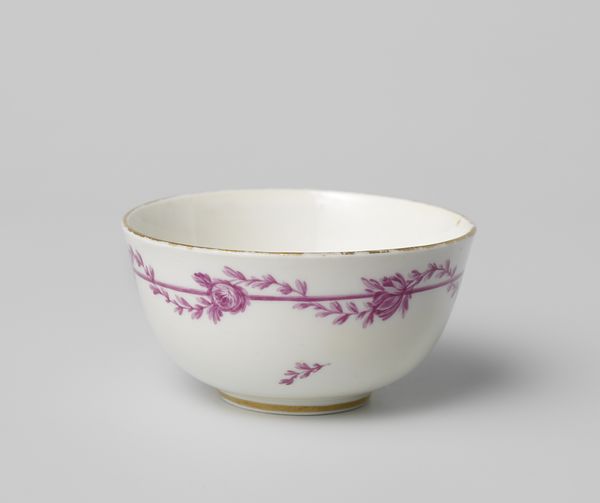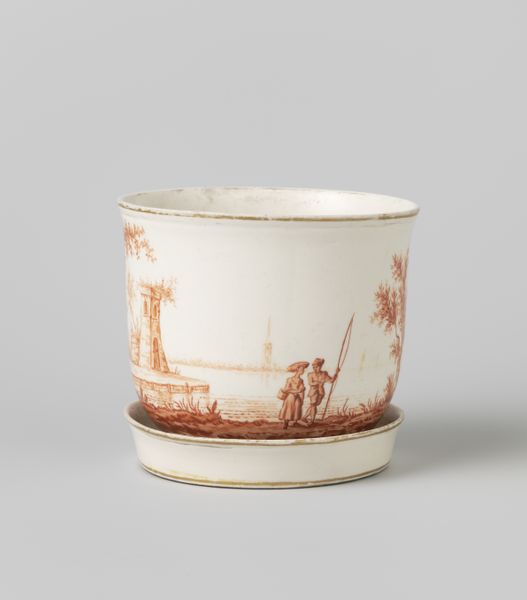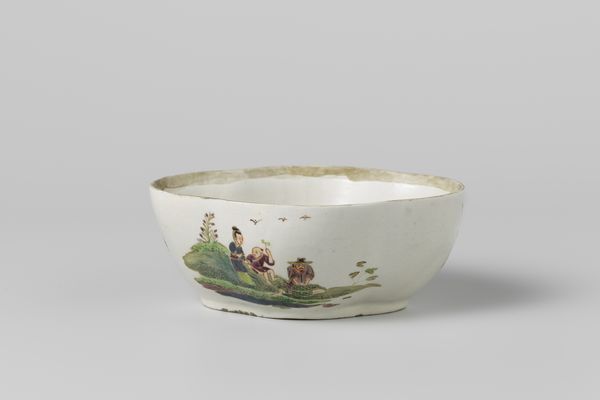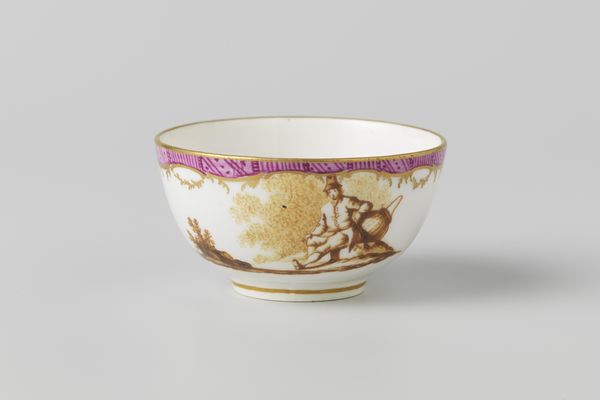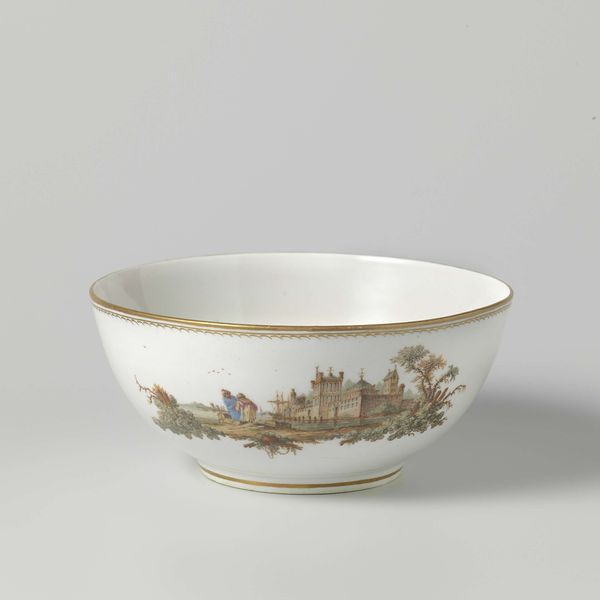
Spoelkom, beschilderd met een rivirelandschap met boerderijen en figuren in een boot c. 1774 - 1778
0:00
0:00
loosdrecht
Rijksmuseum
#
studio photography
#
product photograph merchandise
#
product studio photography
#
staged studio photograpy
#
product promotion photography
#
product photography advertising
#
product fashion photography
#
lifestyle product photography
#
product design photgrpaphy
#
product photography
Dimensions: height 8 cm, diameter 18.5 cm
Copyright: Rijks Museum: Open Domain
Editor: This delicate porcelain bowl, created in Loosdrecht around 1775, features a hand-painted river landscape. The sepia tones and pastoral scene give it such a serene, almost melancholic feel. What kind of world was being represented on an object like this? Curator: The bowl reflects a burgeoning Dutch national identity shaped by the social and political contexts of the late 18th century. It visualizes an idealized, nostalgic view of the Dutch countryside and is more about how they wanted to be seen than representing life as it was. Notice how the composition mimics the compositional techniques of Dutch Golden Age landscape painting – even while miniaturized on a piece of porcelain. Editor: So, it’s not just decorative, but a statement? A cultural one? Curator: Absolutely. Porcelain factories like Loosdrecht played a role in shaping that culture by providing these everyday objects adorned with politically potent images. How accessible were these pieces, and what other items would someone own displaying this scenery? Editor: That's fascinating! Were these bowls common, or luxury items for a select group? The details seem so fine. Curator: Relatively exclusive, signifying wealth and taste. Owning such items was about projecting a specific image— aligning oneself with certain values and demonstrating a refined appreciation for art and nation. These pieces often circulated in elite social circles, further solidifying these ideologies. Editor: I see. So this bowl isn’t just a pretty object; it’s a window into the cultural aspirations of a specific social class in the Netherlands at that time. I never considered the bowl a deliberate tool. Curator: Precisely. Considering objects in this light helps us to read the deeper historical narratives they contain. This also helps to clarify our own political and ideological relationship to these items and institutions. Editor: It makes me wonder what everyday objects today will be saying about our culture in a few hundred years. Thank you!
Comments
No comments
Be the first to comment and join the conversation on the ultimate creative platform.
